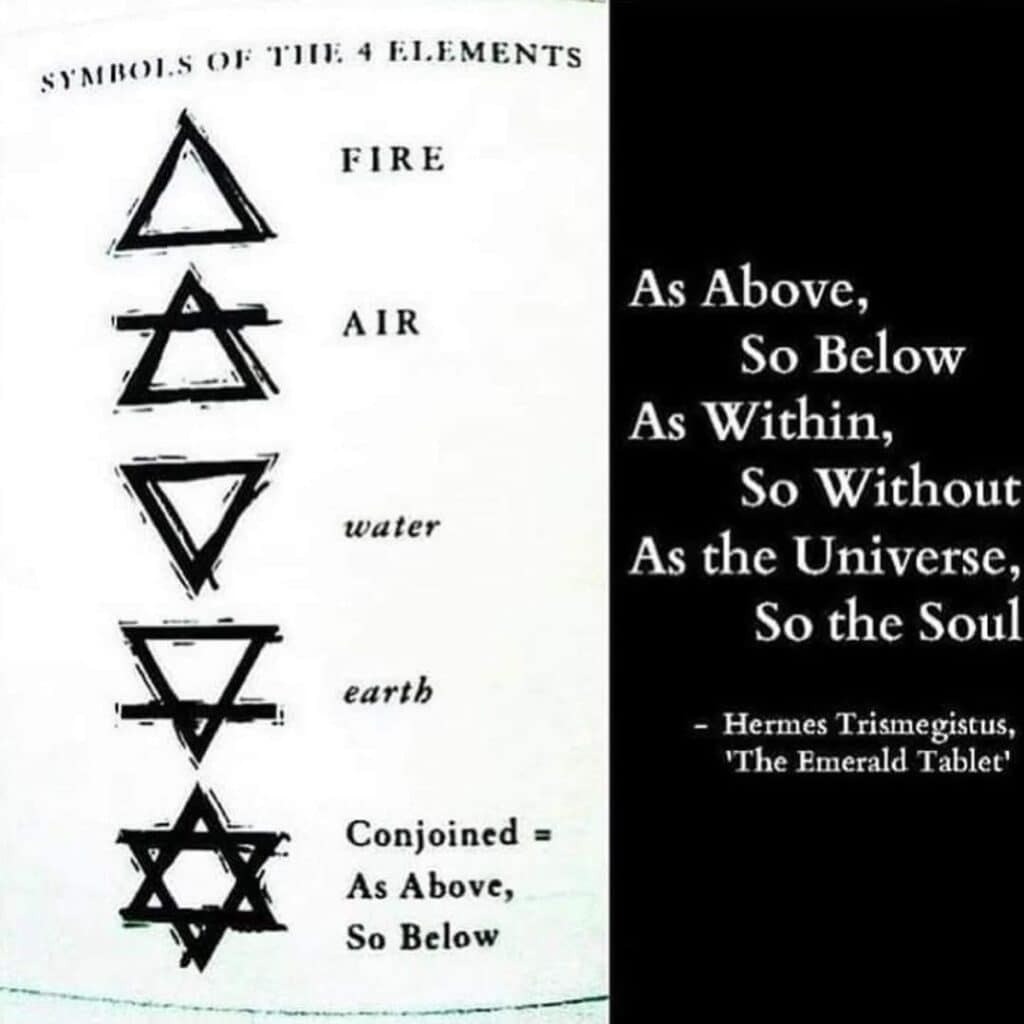From the 3rd or 2nd century BC, Greek texts attributed to Hermes Trismegistus, holder of all knowledge, began to appear in Hellenistic Egypt.
These texts, known as the Hermetica, are a heterogeneous collection of works that encompass alchemical, magical, astrological, and medicinal elements.
“The first inventor of this Art was Hermes Trismegistus, for he knew all three natural philosophies, namely Mineral, Vegetable, and Animal.”
After the flood, he found in the valley of Hebron, where Adam lived after being expelled from the earthly paradise, seven marble tablets on which the principles of the seven liberal arts are engraved. He wrote a brief work (which reproduces the beginning of the Emerald Tablet), which passed to his disciple Pythagoras, then to Plato, Aristotle, and finally to Alexander the Great. Thus, the ante-diluvian wisdom was transmitted, independently of the revelation made to Moses at Sinai.
From another perspective, Wilhelm Christoph Kriegsmann published 1657 a commentary in which he tries to demonstrate, using the linguistic methods of the time, that the Emerald Tablet was not initially written in Egyptian but in Phoenician. He continues his studies of ancient texts and in 1684 argues that Hermes Trismegistus is not the Egyptian Thoth

“Nothing surpasses and nothing equals as a summary of all the doctrines of the old world the few sentences engraved on a precious stone by Hermes and known as the ’emerald tablet’… it is all of magic on a single page.”
Éliphas Lévi

